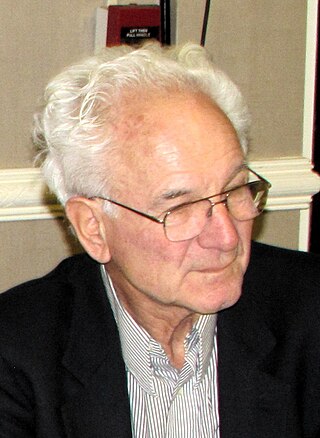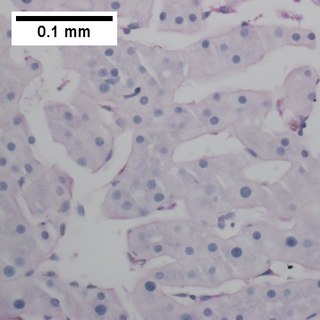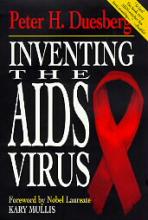Related Research Articles
The Duesberg hypothesis is the claim that AIDS is not caused by HIV, but instead that AIDS is caused by noninfectious factors such as recreational and pharmaceutical drug use and that HIV is merely a harmless passenger virus. The hypothesis was popularized by University of California, Berkeley professor Peter Duesberg, from whom the hypothesis gets its name. The scientific consensus is that the Duesberg hypothesis is incorrect and that HIV is the cause of AIDS. The most prominent supporters of the hypothesis are Duesberg himself, biochemist and vitamin proponent David Rasnick, and journalist Celia Farber. The scientific community generally contends that Duesberg's arguments in favor of the hypothesis are the result of cherry-picking predominantly outdated scientific data and selectively ignoring evidence that demonstrates HIV's role in causing AIDS.

Peter H. Duesberg is a German-American molecular biologist and a professor of molecular and cell biology at the University of California, Berkeley. He is known for his early research into the genetic aspects of cancer. He is a proponent of AIDS denialism, the claim that HIV does not cause AIDS.

Turtle fibropapillomatosis (FP) is a disease of sea turtles. The condition is characterized by benign but ultimately debilitating epithelial tumours on the surface of biological tissues. FP exists all over the world, but it is most prominent in warmer climates, affecting up to 50–70% of some populations.

HIV/AIDS denialism is the belief, despite conclusive evidence to the contrary, that the human immunodeficiency virus (HIV) does not cause acquired immune deficiency syndrome (AIDS). Some of its proponents reject the existence of HIV, while others accept that HIV exists but argue that it is a harmless passenger virus and not the cause of AIDS. Insofar as they acknowledge AIDS as a real disease, they attribute it to some combination of sexual behavior, recreational drugs, malnutrition, poor sanitation, haemophilia, or the effects of the medications used to treat HIV infection (antiretrovirals).
The spread of HIV/AIDS has affected millions of people worldwide; AIDS is considered a pandemic. The World Health Organization (WHO) estimated that in 2016 there were 36.7 million people worldwide living with HIV/AIDS, with 1.8 million new HIV infections per year and 1 million deaths due to AIDS. Misconceptions about HIV and AIDS arise from several different sources, from simple ignorance and misunderstandings about scientific knowledge regarding HIV infections and the cause of AIDS to misinformation propagated by individuals and groups with ideological stances that deny a causative relationship between HIV infection and the development of AIDS. Below is a list and explanations of some common misconceptions and their rebuttals.

Malignancy is the tendency of a medical condition to become progressively worse; the term is most familiar as a characterization of cancer.
Hairy leukoplakia is a white patch on the side of the tongue with a corrugated or hairy appearance. It is caused by Epstein-Barr virus (EBV) and occurs usually in persons who are immunocompromised, especially those with human immunodeficiency virus infection/acquired immunodeficiency syndrome (HIV/AIDS). The white lesion, which cannot be scraped off, is benign and does not require any treatment, although its appearance may have diagnostic and prognostic implications for the underlying condition.

Thymidine kinase is an enzyme, a phosphotransferase : 2'-deoxythymidine kinase, ATP-thymidine 5'-phosphotransferase, EC 2.7.1.21. It can be found in most living cells. It is present in two forms in mammalian cells, TK1 and TK2. Certain viruses also have genetic information for expression of viral thymidine kinases. Thymidine kinase catalyzes the reaction:
An oncolytic virus is a virus that preferentially infects and kills cancer cells. As the infected cancer cells are destroyed by oncolysis, they release new infectious virus particles or virions to help destroy the remaining tumour. Oncolytic viruses are thought not only to cause direct destruction of the tumour cells, but also to stimulate host anti-tumour immune system responses. Oncolytic viruses also have the ability to affect the tumor micro-environment in multiple ways.

Ganciclovir, sold under the brand name Cytovene among others, is an antiviral medication used to treat cytomegalovirus (CMV) infections.
The oral mucosa is the mucous membrane lining the inside of the mouth. It comprises stratified squamous epithelium, termed "oral epithelium", and an underlying connective tissue termed lamina propria. The oral cavity has sometimes been described as a mirror that reflects the health of the individual. Changes indicative of disease are seen as alterations in the oral mucosa lining the mouth, which can reveal systemic conditions, such as diabetes or vitamin deficiency, or the local effects of chronic tobacco or alcohol use. The oral mucosa tends to heal faster and with less scar formation compared to the skin. The underlying mechanism remains unknown, but research suggests that extracellular vesicles might be involved.

Primary effusion lymphoma (PEL) is classified as a diffuse large B cell lymphoma. It is a rare malignancy of plasmablastic cells that occurs in individuals that are infected with the Kaposi's sarcoma-associated herpesvirus. Plasmablasts are immature plasma cells, i.e. lymphocytes of the B-cell type that have differentiated into plasmablasts but because of their malignant nature do not differentiate into mature plasma cells but rather proliferate excessively and thereby cause life-threatening disease. In PEL, the proliferating plasmablastoid cells commonly accumulate within body cavities to produce effusions, primarily in the pleural, pericardial, or peritoneal cavities, without forming a contiguous tumor mass. In rare cases of these cavitary forms of PEL, the effusions develop in joints, the epidural space surrounding the brain and spinal cord, and underneath the capsule which forms around breast implants. Less frequently, individuals present with extracavitary primary effusion lymphomas, i.e., solid tumor masses not accompanied by effusions. The extracavitary tumors may develop in lymph nodes, bone, bone marrow, the gastrointestinal tract, skin, spleen, liver, lungs, central nervous system, testes, paranasal sinuses, muscle, and, rarely, inside the vasculature and sinuses of lymph nodes. As their disease progresses, however, individuals with the classical effusion-form of PEL may develop extracavitary tumors and individuals with extracavitary PEL may develop cavitary effusions.

Bovine malignant catarrhal fever (BMCF) is a fatal lymphoproliferative disease caused by a group of ruminant gamma herpes viruses including Alcelaphine gammaherpesvirus 1 (AlHV-1) and Ovine gammaherpesvirus 2 (OvHV-2) These viruses cause unapparent infection in their reservoir hosts, but are usually fatal in cattle and other ungulates such as deer, antelope, and buffalo. In Southern Africa the disease is known as snotsiekte, from the Afrikaans.
Robert E. Willner was an American doctor noted for his role in AIDS denialism, the view that AIDS is not caused by HIV infection.

Pyruvate dehydrogenase kinase is a kinase enzyme which acts to inactivate the enzyme pyruvate dehydrogenase by phosphorylating it using ATP.
Alcelaphine gammaherpesvirus 2 (AlHV-2) is a species of Macavirus that is believed to be responsible for causing hartebeest infections of malignant catarrhal fever.

Inventing the AIDS Virus is a 1996 book by molecular biologist Peter Duesberg, in which the author argues that HIV does not cause AIDS. Duesberg contends that HIV is a harmless passenger virus and that AIDS is caused by unrelated factors such as drug abuse, antiretroviral medication, chronic malnutrition, poor sanitation, and hemophilia. The unambiguous scientific consensus is that HIV causes AIDS and that Duesberg's claims are incorrect. Duesberg received a negative response from the scientific community for supporting AIDS denialism, misrepresenting and ignoring the scientific evidence that HIV causes AIDS, and for relying upon poor logic and manipulation. The book was also the subject of an authorship dispute with one of his graduate students.

The stages of HIV infection are acute infection, latency, and AIDS. Acute infection lasts for several weeks and may include symptoms such as fever, swollen lymph nodes, inflammation of the throat, rash, muscle pain, malaise, and mouth and esophageal sores. The latency stage involves few or no symptoms and can last anywhere from two weeks to twenty years or more, depending on the individual. AIDS, the final stage of HIV infection, is defined by low CD4+ T cell counts, various opportunistic infections, cancers, and other conditions.
Epizootic hemorrhagic disease virus, often abbreviated to EHDV, is a species of the genus Orbivirus, a member of the family Reoviridae. It is the causative agent of epizootic hemorrhagic disease, an acute, infectious, and often fatal disease of wild ruminants. In North America, the most severely affected ruminant is the white-tailed deer, although it may also infect mule deer, black-tailed deer, elk, bighorn sheep, and pronghorn antelope. It is often mistakenly referred to as “bluetongue virus” (BTV), another Orbivirus that like EHDV causes the host to develop a characteristic blue tongue due to systemic hemorrhaging and lack of oxygen in the blood. Despite showing clinical similarities, these two viruses are genetically distinct.
Epstein–Barr virus–associated lymphoproliferative diseases are a group of disorders in which one or more types of lymphoid cells, i.e. B cells, T cells, NK cells, and histiocytic-dendritic cells, are infected with the Epstein–Barr virus (EBV). This causes the infected cells to divide excessively, and is associated with the development of various non-cancerous, pre-cancerous, and cancerous lymphoproliferative disorders (LPDs). These LPDs include the well-known disorder occurring during the initial infection with the EBV, infectious mononucleosis, and the large number of subsequent disorders that may occur thereafter. The virus is usually involved in the development and/or progression of these LPDs although in some cases it may be an "innocent" bystander, i.e. present in, but not contributing to, the disease.
References
- ↑ Mongini PK, Rosenberg LT (January 1976). "Inhibition of lymphocyte trapping by a passenger virus in murine ascitic tumors: characterization of lactic dehydrogenase virus (LDV) as the inhibitory component and analysis of the mechanism of inhibition". J. Exp. Med. 143 (1): 100–13. doi:10.1084/jem.143.1.100. PMC 2190100 . PMID 1244415.
- ↑ Mphahlele MJ, Lau GK, Carman WF (June 1998). "HGV: the identification, biology and prevalence of an orphan virus". Liver. 18 (3): 143–55. doi:10.1111/j.1600-0676.1998.tb00142.x. PMID 9716223.
- ↑ Potharaju NR, Potharaju AK (March 2006). "Is Chandipura virus an emerging human pathogen?". Arch. Dis. Child. 91 (3): 279–80. doi:10.1136/adc.2005.074708. PMC 2065945 . PMID 16492900.
- ↑ Metzler AE (January 1991). "The malignant catarrhal fever complex". Comparative Immunology, Microbiology and Infectious Diseases. 14 (2): 107–124. doi:10.1016/0147-9571(91)90125-W. PMID 1934998.
- ↑ Cohen J (1994-12-09). "The Duesberg phenomenon". Science. 266 (5191): 1642–1644. Bibcode:1994Sci...266.1642C. doi:10.1126/science.7992043. ISSN 0036-8075. PMID 7992043.
- ↑ Duesberg P, Rasnick D (1998). "The AIDS dilemma: drug diseases blamed on a passenger virus". Genetica. 104 (2): 85–132. doi:10.1023/A:1003405220186. PMID 10220905. S2CID 30201649.